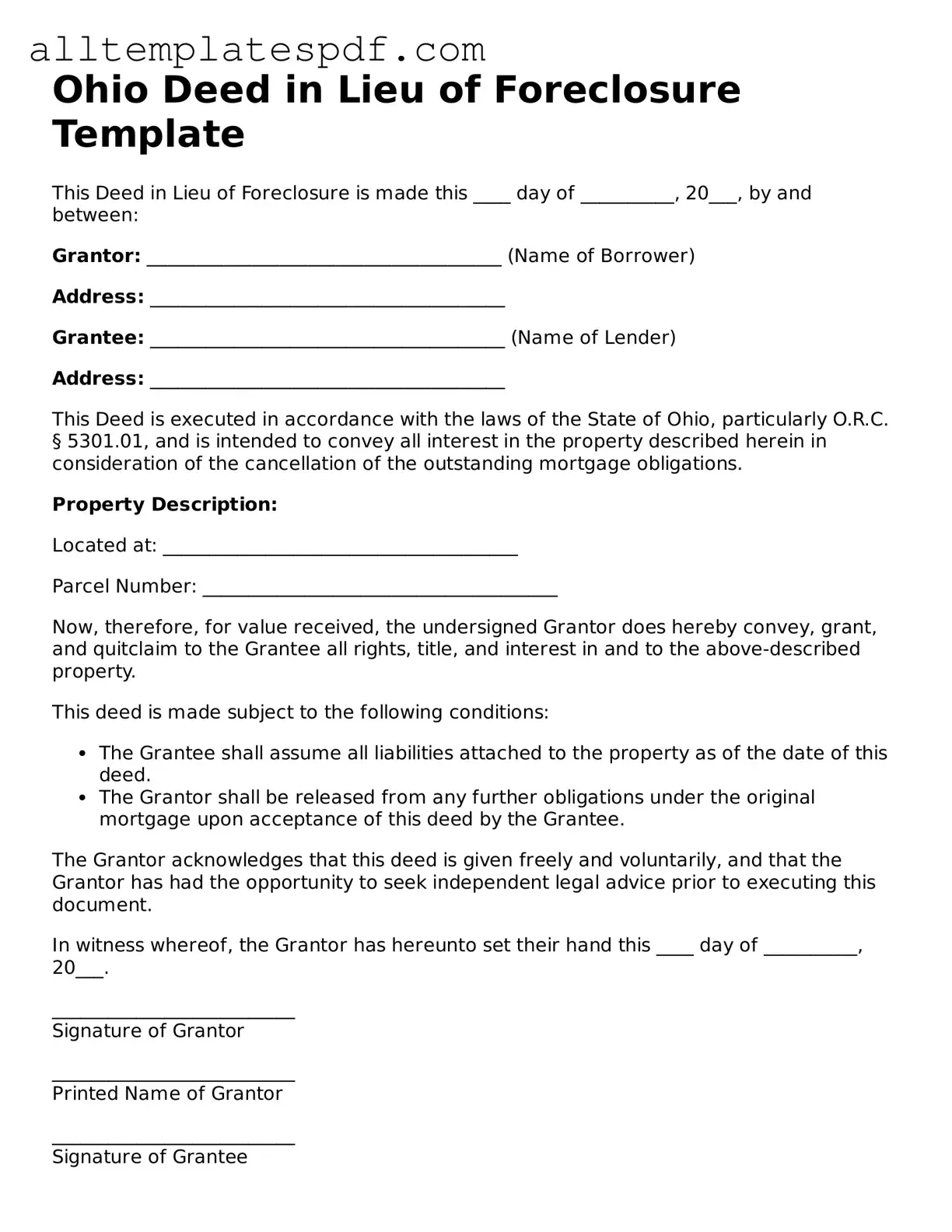Filling out the Ohio Deed in Lieu of Foreclosure form can be a challenging task, and mistakes can lead to significant delays or complications in the process. One common mistake is failing to provide accurate property information. It is essential to include the correct legal description of the property, as this ensures that the deed is properly executed and recognized by the court. Omitting or incorrectly stating details can result in legal issues that may prolong the foreclosure process.
Another frequent error involves not obtaining the necessary signatures. All parties involved in the deed must sign the document. This includes not just the borrower but also any co-owners or spouses. If signatures are missing, the deed may be considered invalid, leading to further complications down the line.
People often overlook the importance of notarization. In Ohio, a deed must be notarized to be legally binding. Failing to have the document notarized can render it ineffective, which means that the intended transfer of property ownership may not occur as planned. It is crucial to ensure that a licensed notary public is present during the signing process.
Additionally, some individuals neglect to review their mortgage agreement before completing the form. Understanding the terms of the mortgage can provide insight into potential consequences of a deed in lieu of foreclosure. This knowledge can help individuals make informed decisions and avoid unexpected repercussions.
Another mistake is not providing adequate notice to the lender. Before submitting the deed, it is often required to inform the lender of the intent to pursue this option. Skipping this step can lead to misunderstandings and may hinder the process, as lenders typically need to be aware of the borrower’s actions.
People sometimes fail to seek legal advice before completing the form. While it may seem straightforward, the implications of a deed in lieu of foreclosure can be significant. Consulting with a legal professional can provide clarity and guidance, ensuring that all aspects of the deed are understood and properly addressed.
Moreover, individuals may not fully comprehend the tax implications associated with a deed in lieu of foreclosure. It is important to understand how this action may affect personal taxes, as forgiven debt can sometimes be considered taxable income. Seeking advice from a tax professional can help clarify these potential consequences.
Lastly, some people rush through the process without thoroughly reviewing the entire form. Taking the time to carefully read each section can prevent errors and omissions that could complicate the deed's acceptance. Attention to detail is crucial, as even minor mistakes can have lasting effects on property ownership.
